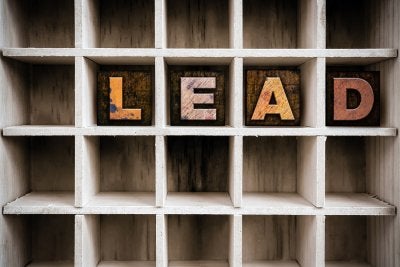-
Where Lead Could Be Lurking in Your Home
Lead is a substance that can pose a threat to your family’s health by affecting your home’s indoor air quality. For this reason, it’s important to test your home for this substance if there is any chance that it may be present, particularly before beginning projects like kitchen remodels or home renovations. When you have your home tested for the presence of lead and level of its air quality in San Francisco , there are certain locations where the inspection team might check for lead.

Homes that were built before 1978 may have lead-based paint. When you sand, tear down, or remodel walls that are covered in paint that is contaminated with lead, this can release harmful amounts of lead into the air that can cause a broad range of health issues in anyone exposed to them. Some older homes may also have plumbing that contains lead, which means that they can contaminate drinking water. If there is a chance that your home is contaminated with lead, then consider scheduling an air quality test right away.
-
Why is Lead Exposure Dangerous?
Exposure to lead or lead paint in San Francisco can cause dangerous symptoms of lead toxicity, particularly in young children. Lead-based paint can deteriorate over time and become airborne, significantly decreasing your home’s indoor air quality. When you inhale lead paint particles, you are at risk for lead toxicity or lead poisoning symptoms.
Watch this video to learn more about the dangers of exposure to lead and lead-based paint. If you suspect that your home contains lead pipes or lead paint, you should hire an expert for lead testing and lead abatement. Lead poisoning symptoms in children may include developmental delays, learning difficulties, weight loss, hearing loss, sluggishness, irritability, abdominal pain, vomiting, and constipation. Lead poisoning symptoms in adults include high blood pressure, cognitive problems, muscle pain, joint pain, headaches, memory loss, mood disorders, abdominal pain, constipation, and reproductive problems.
-
Looking Back at the History of Lead
Although lead has been remarkably important in the rise of modern civilization and society, it’s also an insidiously toxic metal that has caused untold sickness and death as long as it’s been used. The dangers of lead poisoning are well documented today, but concerns with lead-based paint and other lead-containing products continue to drive businesses and homeowners to perform lead testing and seek lead abatement services in San Francisco. But how lead come to pose such a risk to modern society? Consider this brief history of lead to find out.
Early Romans and the Dangers of Lead

Lead played a major role in the building of the great Roman Empire, including the vast network of piping that kept Rom and the provincial cities of the Empire supplied with water. However, lead also played a role in the downfall of Rome. The Romans were aware that lead could cause serious health problems, and yet they equated limited exposure with limited risk. What they didn’t realize, as the world would discover in the 20 th century, is that everyday low-level exposure to the metal rendered them vulnerable to chronic lead poisoning.The U.S. Leads the World in Lead Consumption
Fast forward a few thousand years and the U.S. emerges as the world’s leading producer and consumer of refined lead. According to reports, by 1980 the United States was consuming approximately 1.3 million tons of lead per year, which represented roughly 40 percent of the world’s supply. Refined lead was used heavily in the automotive industry, and also as a paint additive. That’s why many homes and buildings that date back before 1980 are at a high risk of containing lead-based paint and other lead-containing materials.Lead Protection Measures
As the science and medical communities made the public more aware of the dangers of lead exposure, the U.S. government finally took action to protect its citizens. In 1977, the U.S. Consumer Product Safety Commissions banned lead paint in residential properties and public buildings, along with toys and furniture containing lead paint. Homes or buildings built before the ban took effect should be tested for lead-based paint by an environmental safety testing company in San Francisco. -
Removing Lead-Based Paint
If you live in older home, it’s important that you make sure there are no traces of lead-based paint that can cause anyone in your family to become sick from lead poisoning. A full lead-based paint survey will identify remnants of lead-based paint in your home. After you receive confirmation of lead paint in your home , you will need to take steps to remove the paint in order to limit exposure. Although lead-paint removal is best left to a professional remediator, there are things you can to do eliminate the threat in your own home.
Watch this video to learn about the proper way to dispose of lead paint. You’ll learn about the personal safety equipment you should wear when removing lead-based paint, and how to safely dispose of lead paint after it’s been removed from your home. You’ll also learn about other steps you can take after discovering lead paint in your home, such as painting over with a specially-formulated encapsulation paint.
-
Understanding Lead Toxicity and Poisoning
Lead-based paint and lead-contaminated dust are the most common sources of lead poisoning in children and adults, despite the fact that such paints have been banned for residential use since 1978. If you live in an older residence, it’s recommended that you schedule a lead inspection in San Francisco to determine whether this toxic heavy metal is present inside your home. However, lead-based paint isn’t the only source of lead poisoning. To protect yourself and your family, read this short blog to learn more about lead toxicity and to recognize the signs of lead poisoning.
Signs and Symptoms of Lead Poisoning

Initially, and at small doses, lead poisoning can be hard to detect, especially in health children and adults. Because the most recognizable signs of lead poisoning usually don’t appear until dangerous amounts have accumulated inside the body, seek medical attention if you recognize the following chronic symptoms in yourself or your family:- Abdominal pain
- Mood disorders
- Constipation
- Muscle pain
- Headache
- Memory loss
- Hearing loss
- Sluggishness and fatigue
Lead Poisoning Risk Factors
Although lead is harmful to all humans at high enough doses and over long enough periods of time, there are certain factors that can increase one’s risk of becoming lead poisoned. Infants and young children, for example, are more likely to be exposed to lead than adults and absorb the heavy metal more easily. People who live in homes or apartment buildings that were built before 1980 are also at risk of prolonged exposure to lead through the remnants of lead-based paints.Lead Poisoning Prevention
Children and adults are most frequently exposed to dangerous levels of lead inside older homes, which is why you should schedule a lead-based paint inspection with an environmental testing company in San Francisco before doing any remodeling or touch-up work in an older house that may contain lead paint. If your home has older plumbing containing lead pipes or fitting, run the cold water for at least one minute before using and avoid using the hot water tap to make baby formula or for cooking. -
What to Expect from Your Lead Survey
If your home was built before 1978 and you have children living there, you should take the time to have a lead survey done. Lead can be very harmful to kids and, unfortunately, it is incredibly easy for them to ingest it if it is present anywhere in your home. The good news is that it’s easy to conduct a lead test in San Francisco to see if you need to have lead paint or other sources of lead removed. Here is what you can expect from a lead survey.
Testing Inside Your Home
When you hire a company to come in and do a lead survey for you, they will test every single part of the home that may have lead paint. They will conduct a lead test on window frames, baseboards, kitchen cabinets, painted children’s furniture, trim, and any other items that have been painted. It’s important to have a comprehensive lead test done to ensure that all areas are tested for lead paint.
furniture, trim, and any other items that have been painted. It’s important to have a comprehensive lead test done to ensure that all areas are tested for lead paint. Testing Outside Your Home
While most people think that lead paint is the only place where lead can be found in a home, it can also be found outdoors. You may have lead-contaminated soil right outside of your home. Therefore, a lead test will be conducted on the soil as well as on any chipped or peeling paint on your home’s exterior.Evaluating Your Results
Are the lead levels in your home too high? The company that does your lead survey will be able to get a reading for the lead levels inside and outside your home and compare them with the acceptable levels determined by the U.S. Environmental Protection Agency and Department of Housing & Urban Development. If they are above those levels, they are considered hazardous .Taking Action
If a lead paint test shows that you have high levels of lead in your home, you will need to take the necessary steps to reduce them. You should work with a licensed lead contractor to take care of the problem.
RECENT POSTS
categories
- Uncategorized
- Lead
- Mold
- San Francisco Mold & Asbestos Removal
- Indoor Air Pollution
- Mold Remediation
- Asbestos
- Safe Air Fast
- Mold Inspection
- Remediation
- Bacteria Testing
- Asbestos Testing
- Abatement
- Lead Testing
- Sewer Line
- Lead Survey
- Mold Testing
- Air Quality Inspection
- Home renovations
- Allergies
- Renovation Contractor
- Infographic
- lead paint
- Air Quality
- Air Quality Test
- Mold removal
